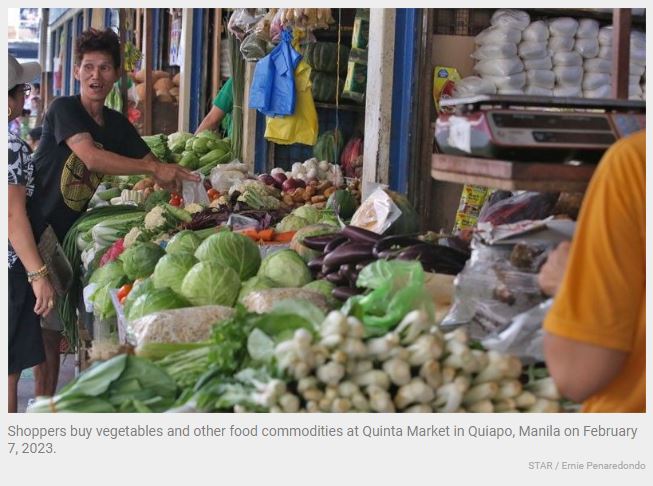Philippines: Inflation eases to 6.1% in May
MANILA, Philippines — The country’s inflation rate eased for the fourth straight month in May due to slower increases in transport and food prices, the Philippine Statistics Authority (PSA) said.
National statistician Dennis Mapa, in a briefing, yesterday said that headline inflation or the rate of increase in prices of goods and services slowed down to 6.1 percent in May from 6.6 percent in April.
This is the lowest inflation rate since the 5.4 percent in May last year.
The latest inflation print is within the 5.8 to 6.6 percent inflation rate projected for May by the Bangko Sentral ng Pilipinas (BSP).
From January to May this year, inflation averaged 7.5 percent, higher than the BSP’s two to four percent target range.
Mapa said the downtrend in headline inflation was primarily due to the decline in the transport index at -0.5 percent from a 2.6 percent uptick in April.
Overall inflation was also pulled down by food and non-alcoholic beverages, which had a lower inflation rate of 7.4 percent in May from 7.9 percent in the previous month.
Inflation for food alone eased to 7.5 percent in May from eight percent in April.
The slower food inflation was driven by the lower increases in fish and other seafood; meat; and milk, other dairy products and eggs.
Other food items with lower inflation rates in May are corn; flour, bread and other bakery products; pasta products and other cereals; oils and fats; fruits and nuts; sugar, confectionery and desserts, and ready-made food.
Restaurants and accommodation services also contributed to the deceleration in overall inflation as it registered a slower inflation rate of 8.3 percent in May from the previous month’s 8.6 percent.
Core inflation, which excludes volatile food and energy items, also eased to 7.7 percent in May from 7.9 percent in April.
“It’s (inflation) on the downward trend. However, there are still risks…One is really on the food items,” Mapa said.
ING Bank senior economist Nicholas Mapa said the downward trend in headline inflation is likely to persist, barring any new supply-side shocks.
“Lower commodity and food prices from a year ago will help push headline inflation lower,” he said in an email.
He said risks, however, are tilted toward the upside with second-round effects still proliferating.
National Economic and Development Authority Secretary Arsenio Balisacan said the government expects further easing in inflation in the coming months.
“We are confident that we can achieve the government’s inflation target this year as we work closely with concerned government agencies in monitoring the primary drivers of inflation,” he said.
He said the Inter-Agency Committee on Inflation and Market Outlook is monitoring trends in local and international prices as well as domestic production, import arrivals, climate outlook, and other relevant supply and demand information for key commodities.
“As the risks to the inflation outlook lean towards the upside due to potential increases in transport fares, wage adjustments, higher electricity rates, and domestic prices of key food items resulting from the impact of El Niño, the government is working to implement the necessary interventions as we aim to keep prices low and stable for Filipino consumers,” he said.
In the short-term, he cited the need for timely imports, sufficient rice buffers and enhanced biosecurity measures.
To mitigate the impact of El Niño on food security, he recommends ensuring an adequate supply of agricultural inputs, prepositioning pumps, promoting early planting in areas likely to experience water deficit in the coming months, and maximizing production in non-threatened areas.
Meanwhile, the economic team of the Marcos administration is confident that headline inflation will finally revert to within target as early as September following its continued downtrend last month.
Finance Secretary and economic team head Benjamin Diokno said the continued decline in inflation for the past four months marks the government’s sustained progress in addressing commodity price increases.
“The new inflation number and the declining trend give confidence that inflation would be within the target range of two to four percent by September this year,” Diokno said.
“This indicates that we are on track to manage inflation near the mid-point of the target by next year,” he said. — Louise Maureen Simeon
Source: https://www.philstar.com/business/2023/06/07/2271949/inflation-eases-61-may


 English
English




